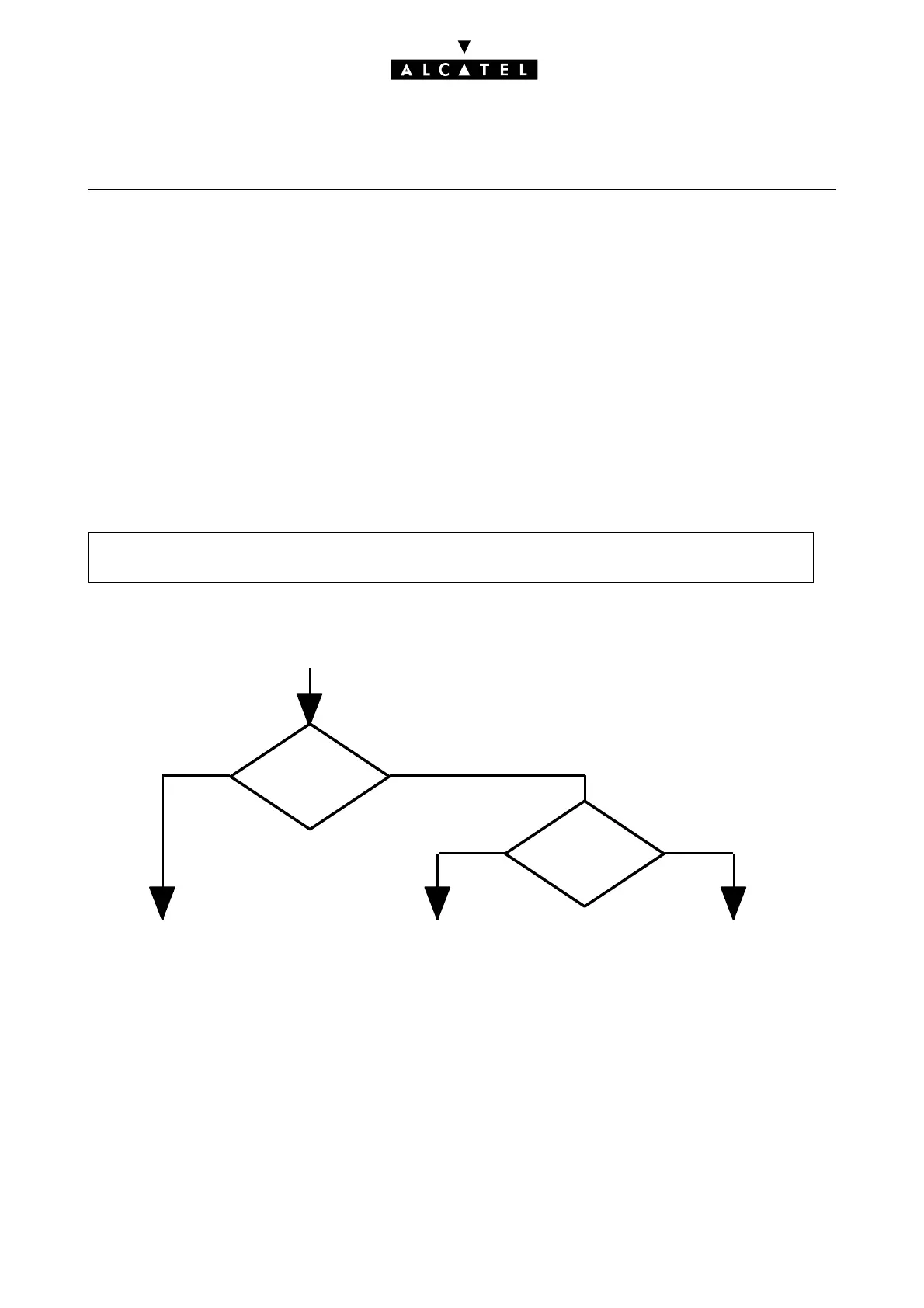CLOCK SYNCHRONIZATION CALL SERVER : PRIVATE NETWORKS
Ed. 042/4 Réf. 3EH 21000 BSAA
SYNCHRONIZATION IN NETWORKS
To avoid loopbacks in the synchronization paths, you need to define a hierarchy of network nodes.
DEFINITIONS
- Pilot node (= level 1): node with the most interfaces to the public network; preferably a T2.
- Level 2: node with at least one synchronizing link coming from a pilot node.
- Level 3: other nodes.
PRIORITY NUMBERS
To be able to modify and enlarge a network, you should construct a tree diagram for the synchroni-
zation of each node in the network.
A priority number must be assigned (P) to each node.
For the clock priority settings for the ISDN/Q_SIG boards to be taken into account, the system requires
a warm reset.
- by MMC-PM5 (Expert View), select: System Miscellaneous -> Hardware -> Lineboard
Details (part 2) -> Clock Priority -> enter the number (0 to 255).
YES
NO
NO
YES
Pilot
node?
Public
access
?
If public T2 : 0
If permanent T0 : 1
If non permanent T0 : 9
If link from level 2 : 20
If link from level 3 : 30
Other links : 255
If public T2 : 0
If permanent T0 : 9
If non permanent T0 : 19
If link from level 1 : 10
If link from level 2 : 20
If link from level 3 : 30
Other links : 255
If link from level 1 : 10
If link from level 2 : 20
If link from level 3 : 30
Other links : 255
France Type : T0 with non permanent activation of level 1
Germany Type : T0 with non permanent activation of level 1

